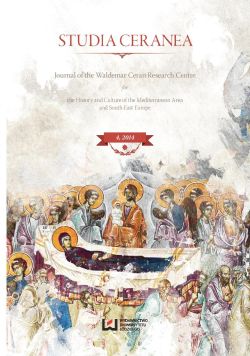On Medieval Storytelling. The Story of Melchizedek in Certain Slavonic Texts (Palaea Historica and the Apocryphal Cycle of Abraham)
On Medieval Storytelling. The Story of Melchizedek in Certain Slavonic Texts (Palaea Historica and the Apocryphal Cycle of Abraham)
Author(s): Małgorzata SkowronekSubject(s): Other Language Literature
Published by: Wydawnictwo Uniwersytetu Łódzkiego
Keywords: Old Church Slavonic literature; textology; Palaea Historica
Summary/Abstract: The article analyses the story of the prophet-king Melchizedek (mentioned in Gen 14,17–20, Ps 110,4 and three passages in Heb: 5,6–10, 6,20, 7,1–17), recorded in Slavonic historical texts: the first and second translation of Palaea Historica, and the first and second edition of the so-called apocryphal cycle of Abraham (in which there are several references to Melchizedek). Compared to the scarce information about Melchizedek from the Old and New Testament, stories of extra-biblical origin communicate a significant amount of detail concerning the king-priest, comprising a description of nearly all of his life. Comparison of key episodes in the life of Melchizedek and Abraham (such as origin, revelation, conflict with their pagan parent, leaving home and journey, promise of greatness given by God, testimony or theophany or angelophany, experience of human sacrifice, a change of name) in the Palaea and the cycle confirms – based on the Slavonic material – analogies in the construction of the two protagonists. Both accounts – in the Palaea and the cycle – make the characters more “full-blooded” than in the Bible. The story of Melchizedek presented in the Palaea is characterised by fragmentation (being contained in four chapters), and disrupts chronological order to a small degree, emphasising cause-and-effect relationships, while at the same time it can be considered as a prototype or a singular variant of Vitae: the structure and selection of content of the bio- or hagiographic story meet the characteristics of the genre.
- Issue Year: 2014
- Issue No: 4
- Page Range: 171-191
- Page Count: 21
- Language: English

